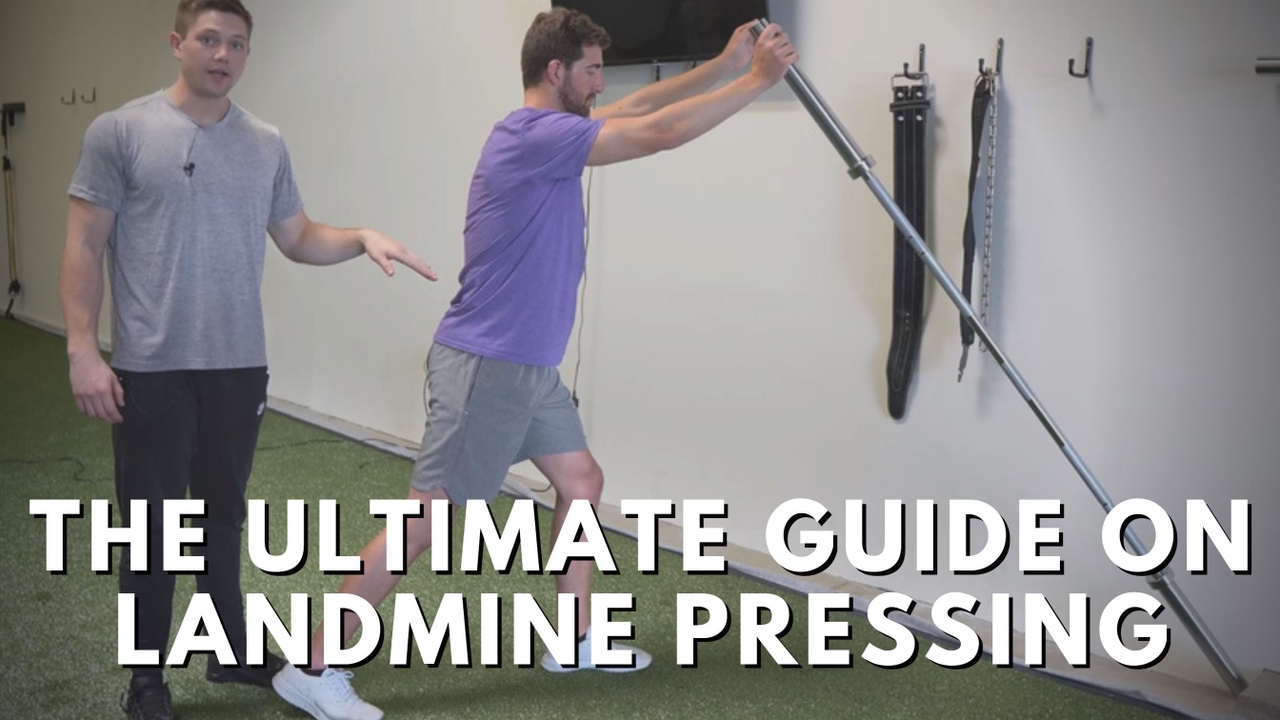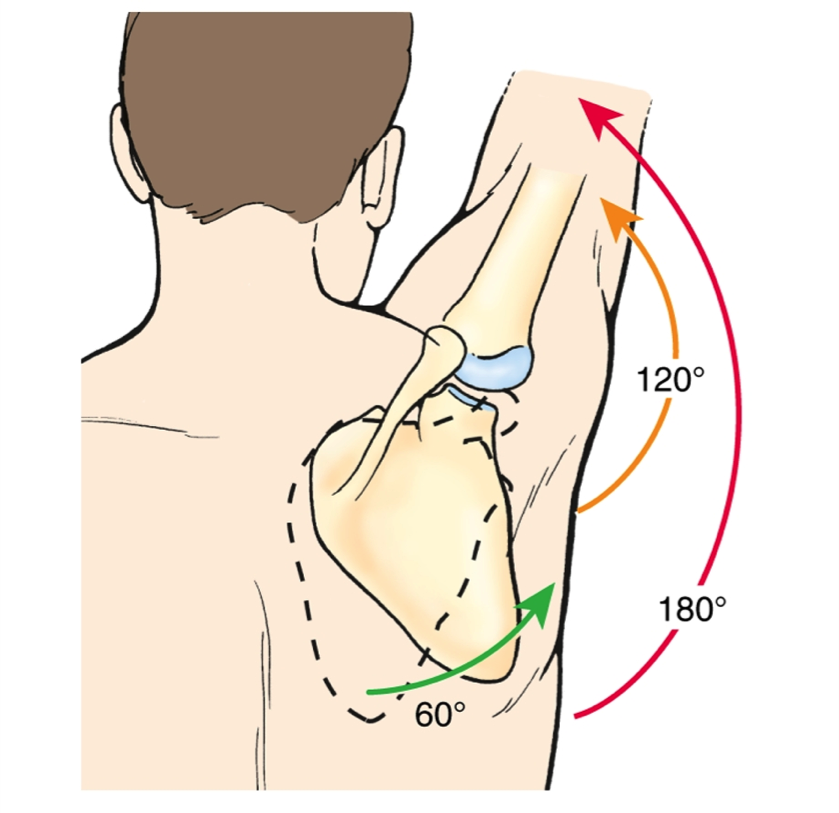How to Landmine Press For Shoulder Health & Muscle Gains
Aug 02, 2021
Landmine presses are one of the most commonly butchered exercises in the gym. They are often promoted as a safe exercise for the shoulders for pressing overhead, but often times people aren't aware of the proper form to maximize their shoulder health and optimally recruit the pressing muscles.
In this article we will discuss:
- The biomechanics of the shoulder
- Common mistakes in landmine pressing
- How to landmine press with proper form
Shoulder Mechanics For Upper Body Pressing Exercises
The key, foundational principle shoulder health that is often overlooked is that your shoulder blade (scapula) is a rounded inward (concave) structure that sits on a thoracic ribcage that is supposed to have a degree of rounding, or pushing out (convexity):

This applies to many joints in our body, even the shoulder itself:
![PDF] The convex-concave rule and the lever law. | Semantic Scholar](https://d3i71xaburhd42.cloudfront.net/a297da17efa74b74c026dada939598f221848bb9/1-Figure1-1.png)
Take a look at a normal human spine curve. Notice how there is a degree of flexion (convexity) of the thoracic ribcage:
The scapula is concave so that it can effectively glide, rotate, and move on the thoracic ribcage:

Now, let's appreciate the next key concept in landmine pressing, or any overhead activity for that matter: scapulohumeral rhythm. This means that your shoulder blade (scapula) has an intricate and direct relationship with your arm (humerus) and shoulder joint.
There exists about a 2:1 ratio for arm to scapular rotation in overhead movement. This means that for every two degrees your arm moves overhead, your scapula will rotate one degree:
In order for this rhythm to occur properly, the scapula needs to move on a convex ribcage.
Common Mistakes in Landmine Pressing
The most common mistake I see in landmine pressing is that people end up over-extending (arching) their backs in an attempt to get their arms overhead:
This results in people pressing the weight up with more of their low backs rather than actually recruiting the muscles they want in their shoulders and upper backs to press the weight.
This usually results from using too much weight and/or being unaware of the underlying mechanics of the shoulder, which is completely understandable for the average gym go-er.
So what can we do? Well, the setup is everything.
How To Landmine Press With Proper Form
In order to execute a proper landmine press, the key is to set up in a position that allows for the concave and convex relationship to occur. This means that we should be able to "reach" our arms forward while retracting our ribcage, or pushing our thoracic ribs into a degree of slight flexion:
The key is not to lose any height in our skeleton as we do this. I am not promoting or recommending "slouching" as that is equally as problematic as over-extending.
I have found through coaching hundreds of people through a landmine press that reaching with both arms results in a better setup than only reaching with one.
After you reach, make sure you also have a slight posterior pelvic tilt. Now, keep that through the duration of the press. I am a fan of alternating the arms throughout the press, as that provides mobility and healthy joint movement of the ribs, but if you feel more comfortable, simply keep the unloaded arm reaching forward the whole time. That will allow you to keep sensing that flexion.
Another reason why this is so helpful is because the retraction of the ribs and reaching of the arms helps recruit the Serratus Anterior, a muscle that is often referenced as key for "shoulder health".

An underappreciated role of the Serratus Anterior is that it is meant to keep the scapula gliding on the ribcage, especially as our arm moves overhead. If this muscle wasn't doing it's job, we often see the scapula "wing" and come off of the ribcage in pressing, or even in standing posture:

Click here for more information on scapular winging and what you can do to fix it.
Closing Thoughts
Landmine pressing is a great activity if executed with the proper form and intent. To do it right, you may need to take some weight off of the bar, but if that upsets you, I would ask, "What is your goal? To train your low back or your shoulders and upper back?" If your goal is the former, there are a lot more effective exercises for the back extensors than compensating through a landmine press. If your goal is to train shoulder health, strength, and hypertrophy, think about the following keys:
- The scapula needs to glide on a slightly flexed thoracic ribcage
- Ribcage retraction and reaching sets the entire body in a position to optimally recruit the goal muscles of the landmine press and inhibits the low back from taking over
- Alternating the arms or keeping the unloaded arm reaching throughout the press helps maintain the convex/concave relationship
Now you may be asking, "Does this apply to all types of presses?" And the answer is no.
Landmine pressing occurs in an open-chain position of the scapula and shoulder, meaning that the body isn't fixated to anything besides the weight. This allows for full gliding and rotation to occur.
Things change when we lay on a bench for something like a bench press. Because the upper back is pressing into a bench, the rotation and gliding of the scapula on the ribcage cannot happen nearly as easily, as the force of the bodyweight and the weight itself is pressing us back into the bench. In this context, it is appropriate to use the classic cues of "shoulders down and back" to stabilize the scapula and to prevent the shoulders from rounding forward into a compromised position.
Just be aware that too much volume of those types of presses can cause a lot of compression and stiffness around the upper back region, which over time can lead to some potential shoulder issues. I try to balance out those types of presses with activities that allow your scapula to go through a full range of motion.
"Conor, Where Should I Look To Fix My Shoulders?"
If you've read through this and thought, "Conor, this sounds great, but how can I ensure consistent and structured progress?" or "How about a step-by-step guide to improve my shoulders?", then I've got just the thing for you.
Introducing the THE NO B.S. GUIDE TO SHOULDER HEALTH. It’s designed with the clarity and depth I bring to all my content. With just 15 minutes a day, I’ve streamlined a program tailored for optimal shoulder health, catering to those even with the busiest of schedules.
Why go through tons of exercises, hoping one sticks, when you can follow a methodical program that progresses with you, ensuring not just mobility, but strength through that new range? With detailed 4K videos to guide you, it's almost like having me right there coaching you in real time.
Shoulders are more than just about posture; they're about life quality. The freedom to move, express, and live without restrictions. It’s time to invest in your shoulder health and reclaim that freedom. Check out the NO B.S. GUIDE and start feeling better in no time!
https://www.conorharris.com/shoulder-health-program
Best,
Conor
Don’t miss out on free education
Join our email list to receive exclusive content on how to feel & move better.


